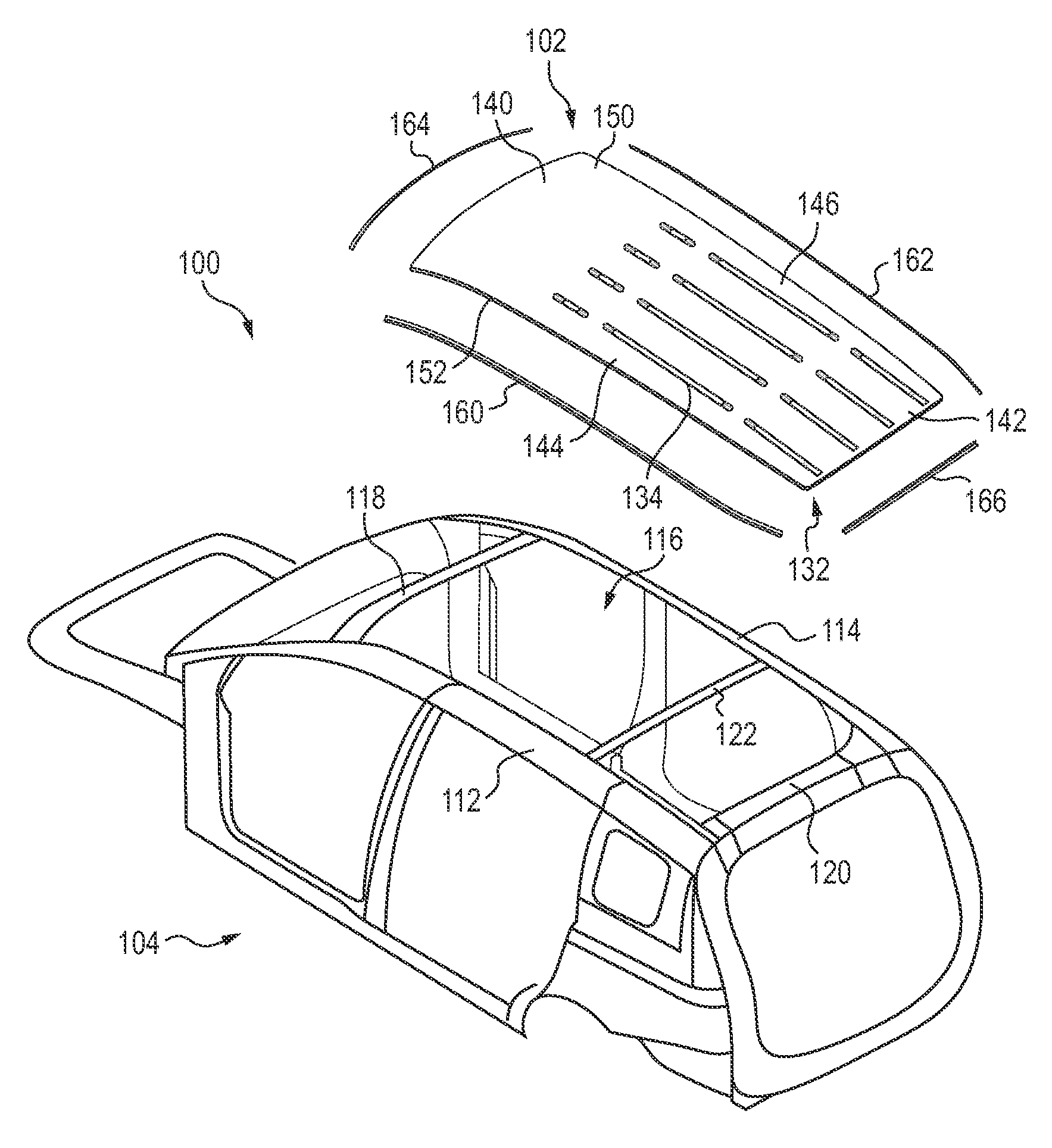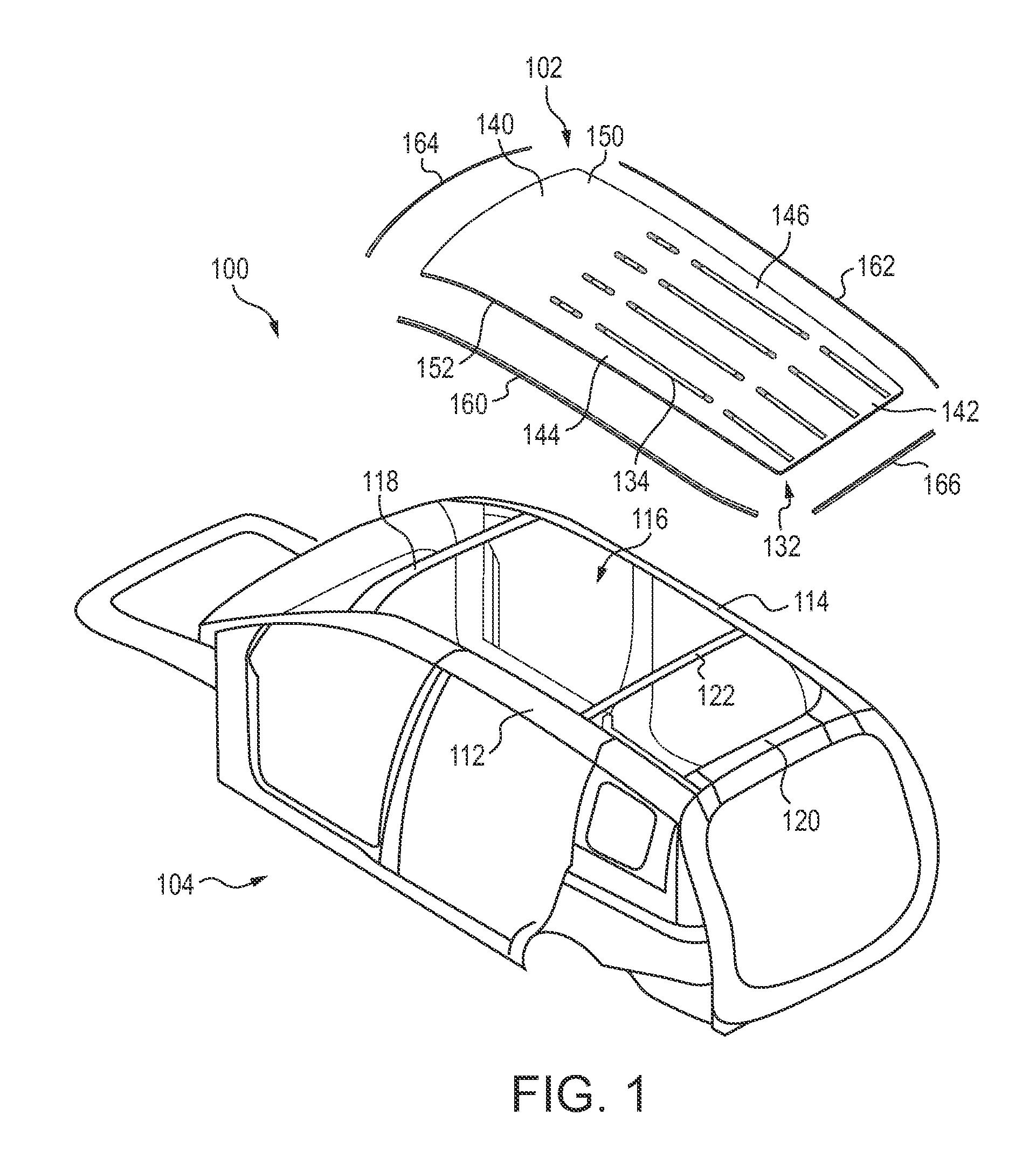Vehicle roof structure
a technology for roof panels and vehicles, applied in roofs, soldering devices, manufacturing tools, etc., can solve the problems of difficult joining of aluminum roof panels to steel body panels, inability to see the visible segment of roof panels, and inability to create compressive stresses in aluminum roof panels. , to achieve the effect of preventing galvanic corrosion, reducing thermal distortion of attached roof panels, and preventing galvanic corrosion
- Summary
- Abstract
- Description
- Claims
- Application Information
AI Technical Summary
Benefits of technology
Problems solved by technology
Method used
Image
Examples
Embodiment Construction
[0013]It should be understood that the description and drawings herein are merely illustrative and that various modifications and changes can be made in the structures disclosed without departing from the present disclosure. In general, the figures of the exemplary vehicle roof structure are not to scale. As used herein, lateral directions are transverse across the vehicle, i.e., left and right directions. Likewise, longitudinal directions refer to forward and rearward directions of vehicle travel, and the vertical directions relate to elevation, i.e., upward and downward directions. It will also be appreciated that the various identified components of the exemplary vehicle roof structure disclosed herein are merely terms of art that may vary from one manufacturer to another and should not be deemed to limit the present disclosure.
[0014]Increasingly, low-carbon steel or steel alloys, long the material of choice for vehicle body construction, is being displaced by higher strength-to-...
PUM
| Property | Measurement | Unit |
|---|---|---|
| temperature | aaaaa | aaaaa |
| temperatures | aaaaa | aaaaa |
| perimeter | aaaaa | aaaaa |
Abstract
Description
Claims
Application Information
 Login to View More
Login to View More - R&D
- Intellectual Property
- Life Sciences
- Materials
- Tech Scout
- Unparalleled Data Quality
- Higher Quality Content
- 60% Fewer Hallucinations
Browse by: Latest US Patents, China's latest patents, Technical Efficacy Thesaurus, Application Domain, Technology Topic, Popular Technical Reports.
© 2025 PatSnap. All rights reserved.Legal|Privacy policy|Modern Slavery Act Transparency Statement|Sitemap|About US| Contact US: help@patsnap.com



